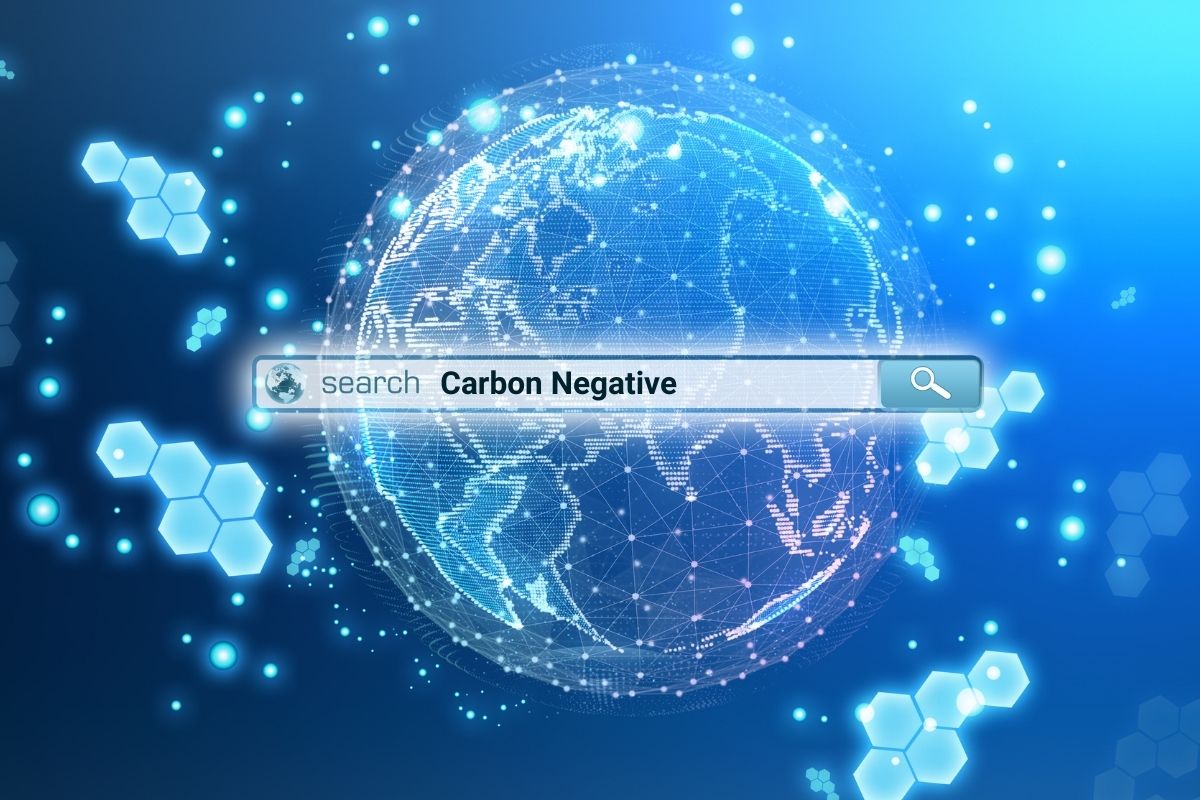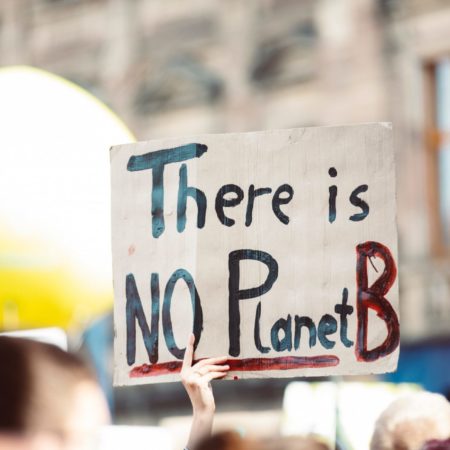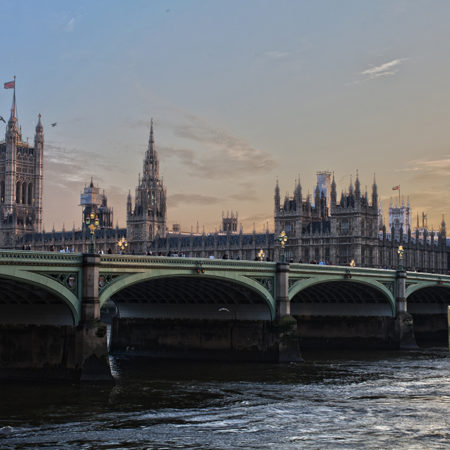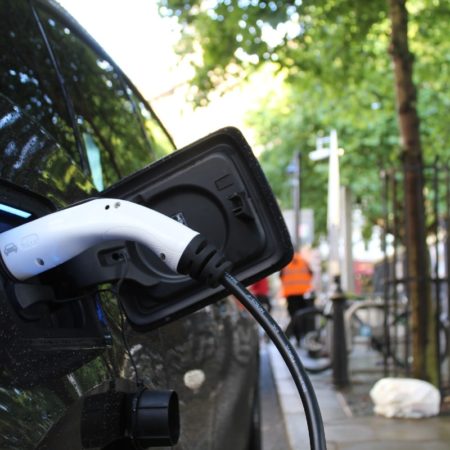A glance at Google Trends tells an interesting story; in recent years, online searches for “net zero” have rocketed, hitting an all-time high just after the COP26 talks. But the concept of “carbon negative” is much less well understood. What exactly does it mean?
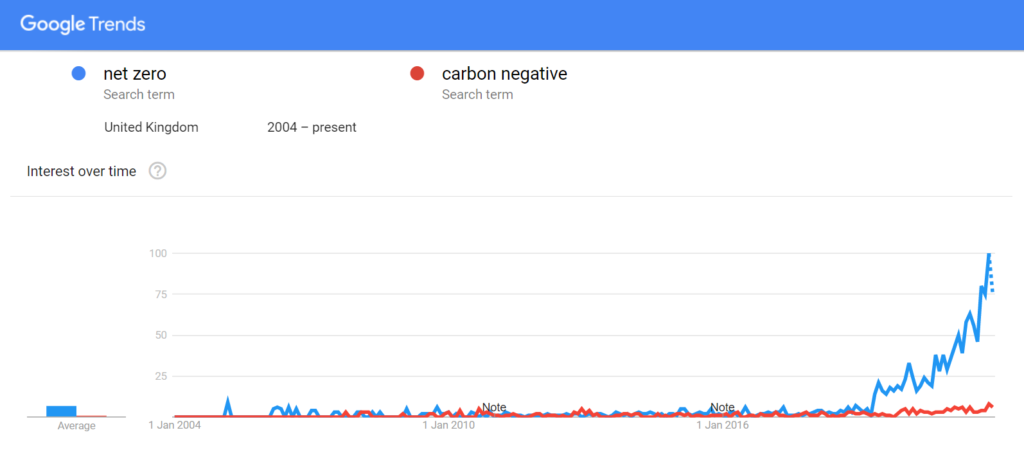
While net zero means achieving a state of equilibrium in terms of greenhouse emissions, carbon negative means that you remove more emissions from the atmosphere than you produce.
In our net zero FAQs we share the analogy of a bath with the taps on; if you want the overall volume of water in the bath to stay the same (net zero), you have to make sure that the water flowing out of the taps (your emissions) is equal to the water disappearing down the plughole (your emissions removal). But in the carbon negative version of this analogy, you’re actually trying to empty the bath.
Is carbon negative really possible?
For a business to reach a carbon negative state, it isn’t enough to cut its emissions, even if it managed to get them down to zero. You also need to carry out activities which actively remove carbon from the atmosphere.
It is estimated that roughly half of all human-generated emissions are absorbed by the earth’s natural carbon sinks in plants, the ocean and soil. Preserving these carbon sinks and reversing any damage done to them is a key part of the fight against climate change, so the logical next step for many businesses is to support such projects as a way of offsetting their existing emissions.
The problem is that there isn’t enough planet to go round. The Intergovernmental Panel on Climate Change (IPCC) explains that all the pathways for limiting warming below 1.5°C pathways involve a drastic change in land use that may be very difficult to implement. It will mean reducing pastureland by up to 11 million km2 in order to create more forests and grow more plant-based food for human consumption.
Here in the UK, there is already concern over Welsh farmland being snapped up for offsetting schemes for global corporations. The IPCC warns that the bigger transitions involved in the future “pose profound challenges for sustainable management of the various demands on land for human settlements, food, livestock feed, fibre, bioenergy, carbon storage, biodiversity and other ecosystem services.” This warning applies to 1.5°C pathways, which involve aiming for net zero emissions by mid-century and are therefore less ambitious than a carbon negative target.
The role of technology
Many of us are hoping for a technological silver bullet that will stop climate change in its tracks while allowing us to continue with business as usual. Many big corporations are investing in this hope, from Chevron’s Technology Ventures Future Funds to Microsoft’s $1 billion Climate Innovation Fund. Currently of interest are direct air capture (DAC), which takes CO2 from the air, and bioenergy with carbon capture and storage (BECCs). Power company Drax is currently planning to create “the world’s first carbon negative power station” using BECCS.
But whatever new technologies may promise for the future, right now there is no technology in existence which can offset what the world is emitting. Relying on technology to save the day is a very risky strategy.
The IPCC is crystal-clear that we cannot rely on on carbon dioxide removal (CDR) technologies. It warned in a 2018 report: “CDR deployed at scale is unproven, and reliance on such technology is a major risk in the ability to limit warming to 1.5°C.”
Hard choices
All scientifically valid pathways for keeping warming below 1.5°C require a rapid phase-out of carbon emissions and serious reductions in other greenhouse gases, such as methane. There is no 1.5°C pathway that allows us to continue with business as usual and solve the problem through tree-planting or clever new carbon sequestration techniques.
Global emissions are currently so high that the earth does not have the capacity to offset them. This means that any valid strategy to become net negative has to focus on reducing ongoing emissions to the absolute minimum. Microsoft’s January 2020 pledge to become carbon negative was praiseworthy in its ambition, but in the first year of the ten-year plan it only managed to cut emissions by 6%, or 0.7 million metric tonnes. At the same time, it purchased the removal of 1.3 million tonnes of carbon. This focus is the wrong way round, and the overall goal of halving actual emissions is nowhere near ambitious enough.
Achieving a genuinely carbon negative state is not impossible, but it is very difficult. Just as with the goal of net zero, it is tempting to hope that your business can carry on as normal and use offsets or technology investments to tick a climate box.
Actually reducing emissions to a genuine minimum is much more difficult and involves profound changes to your way of working. It means hard choices and real leadership. The good news is, businesses are stepping up to the challenge. We have a range of resources to help you get there, including our net zero calculator and net zero business guide.


